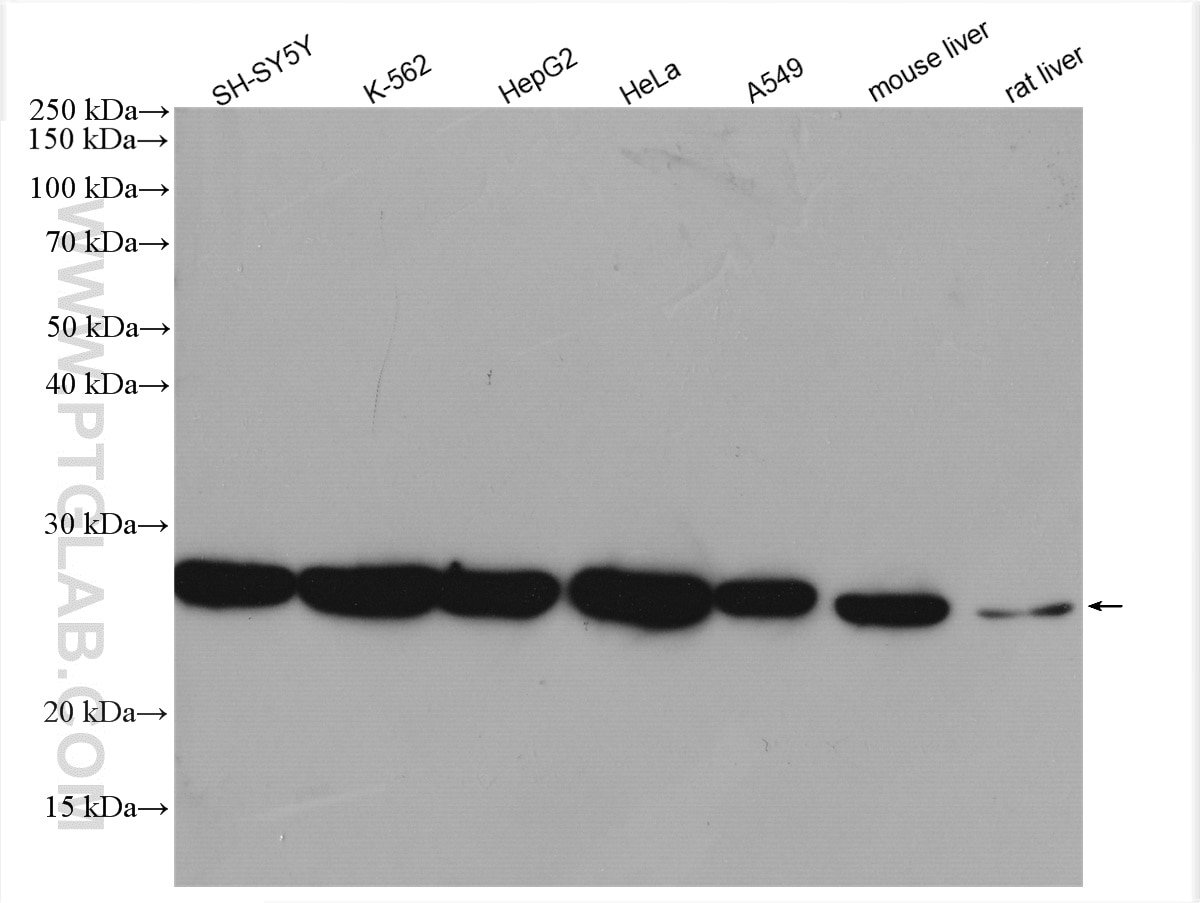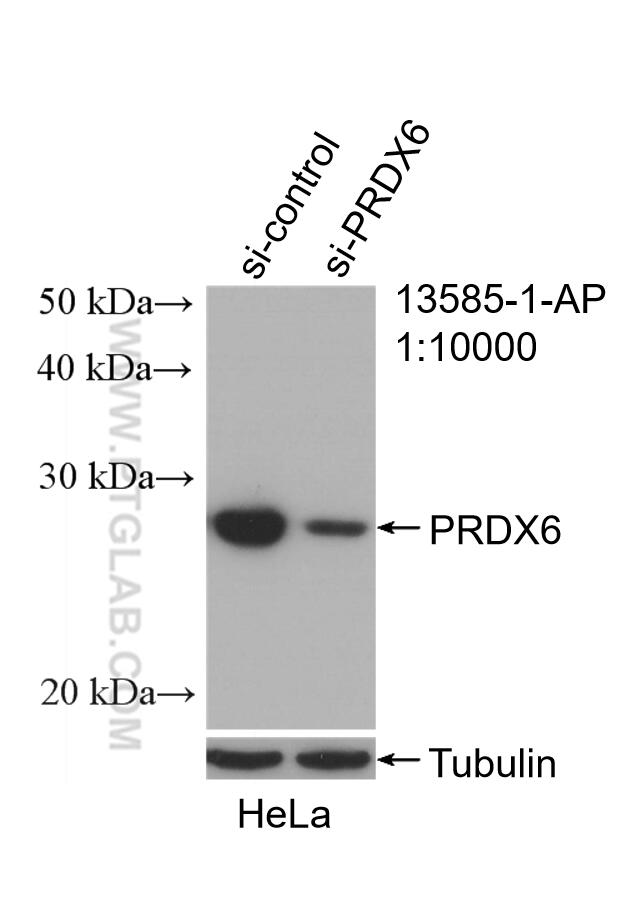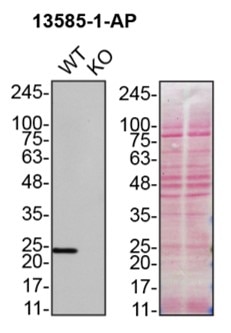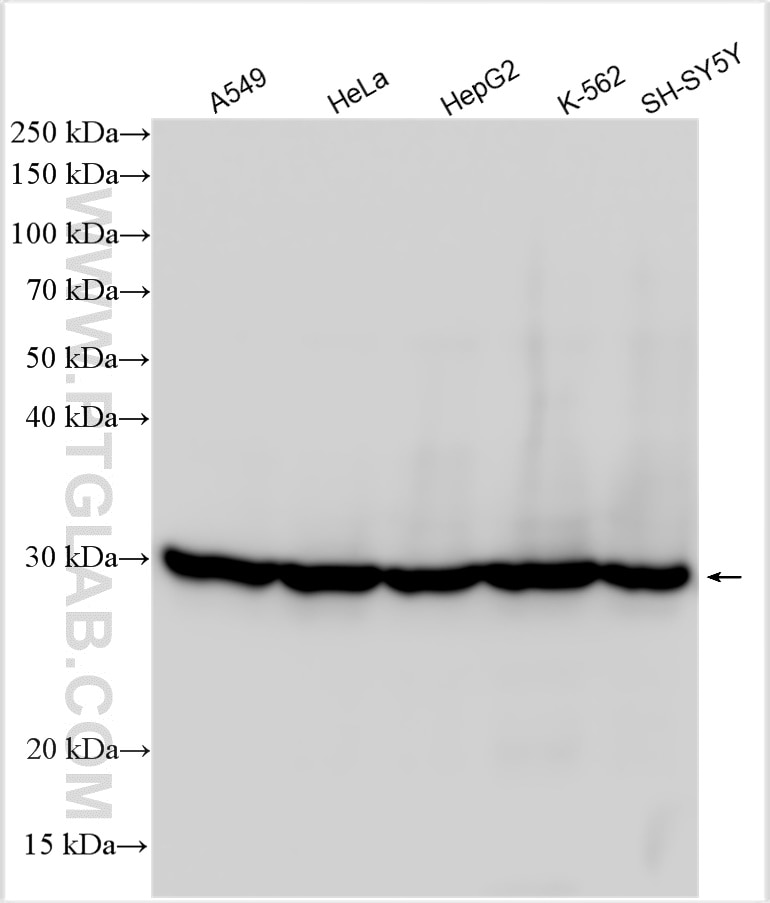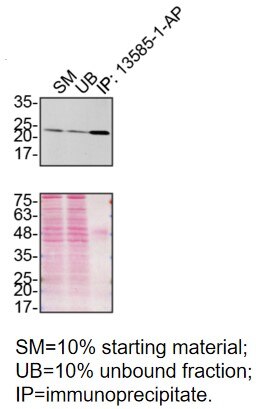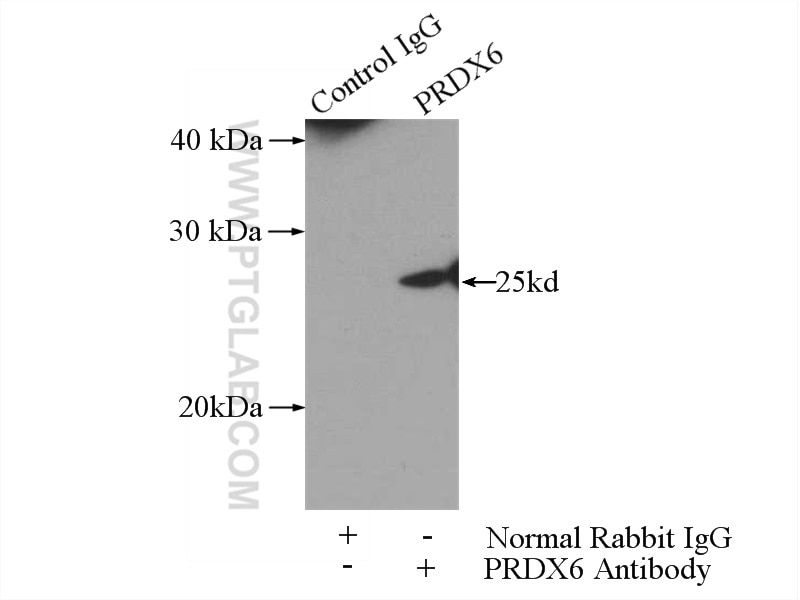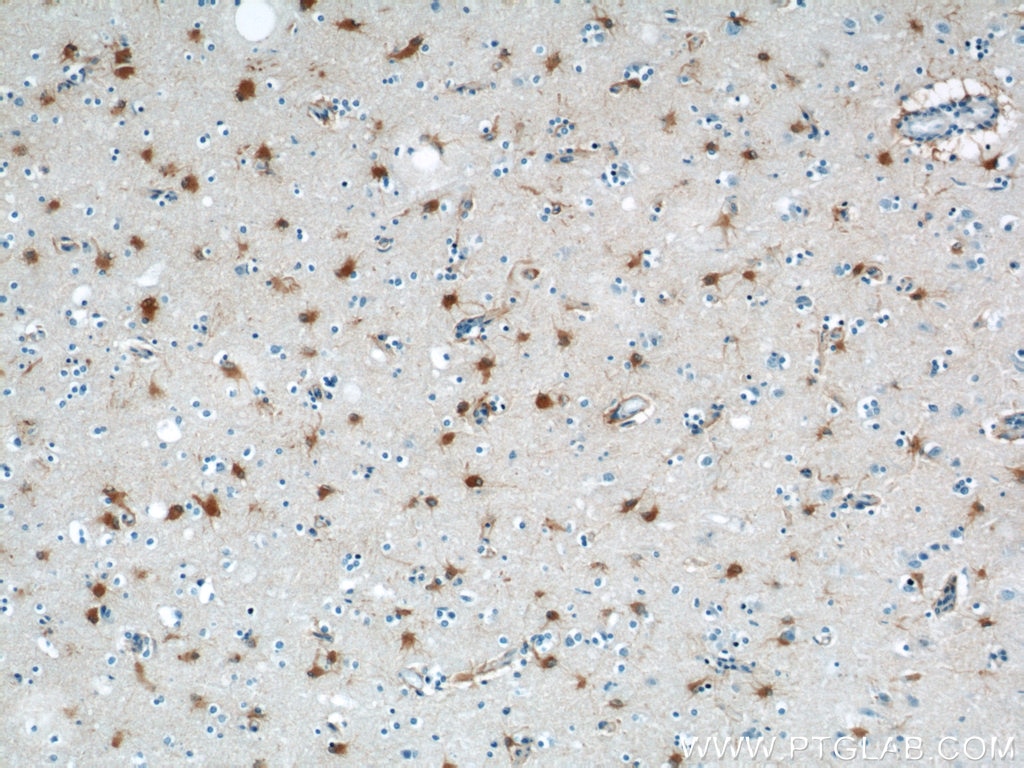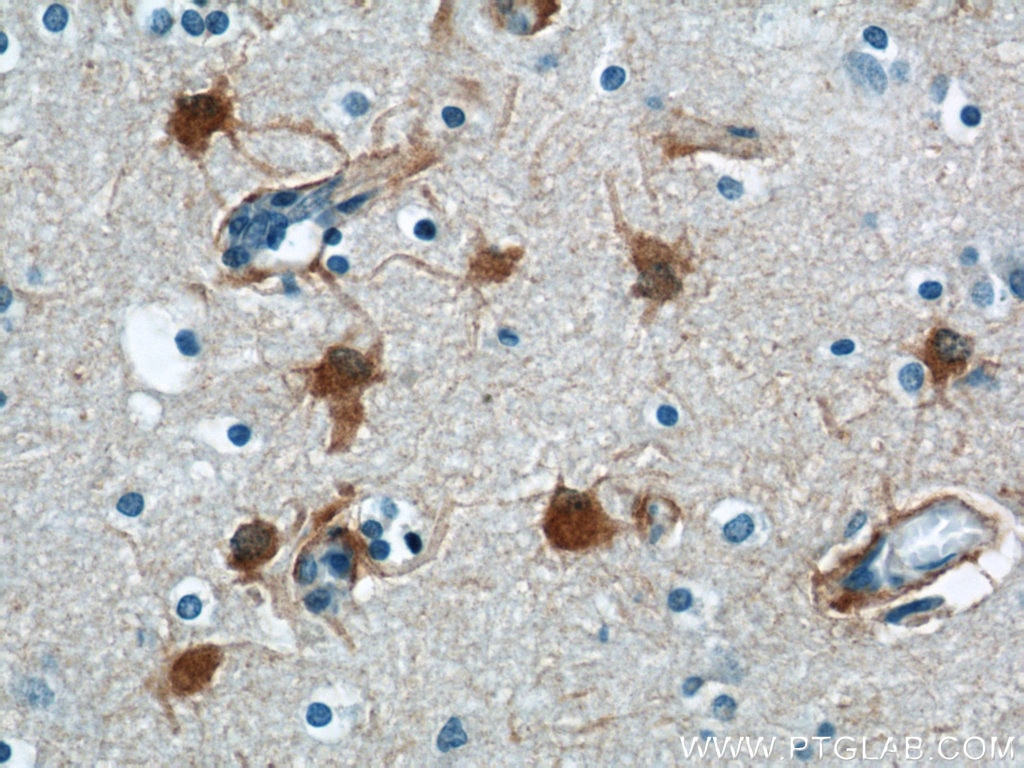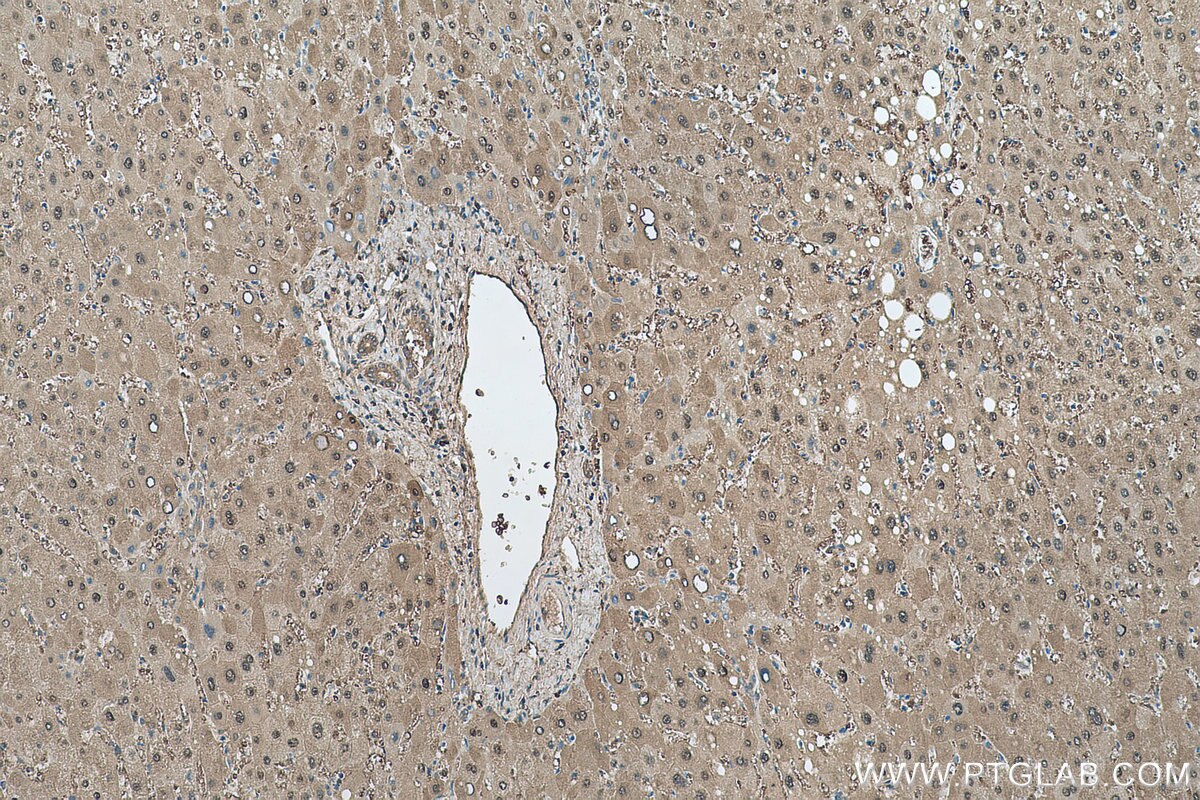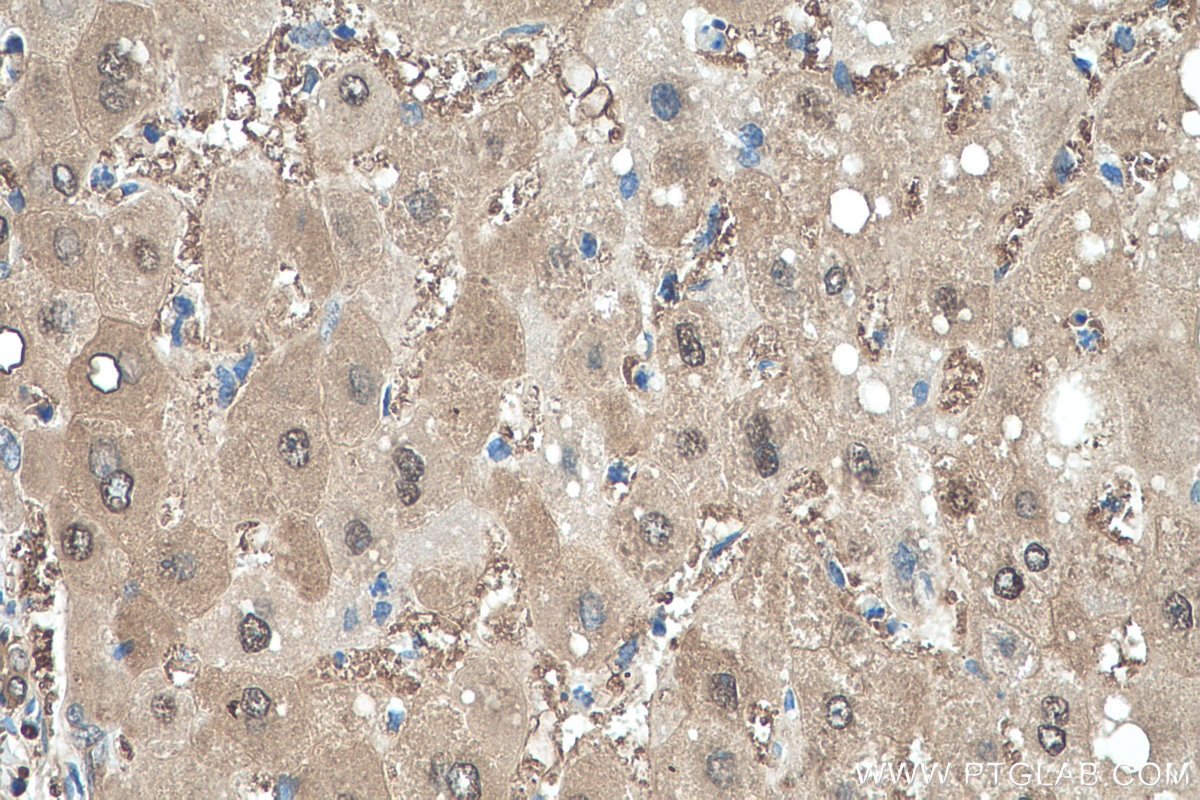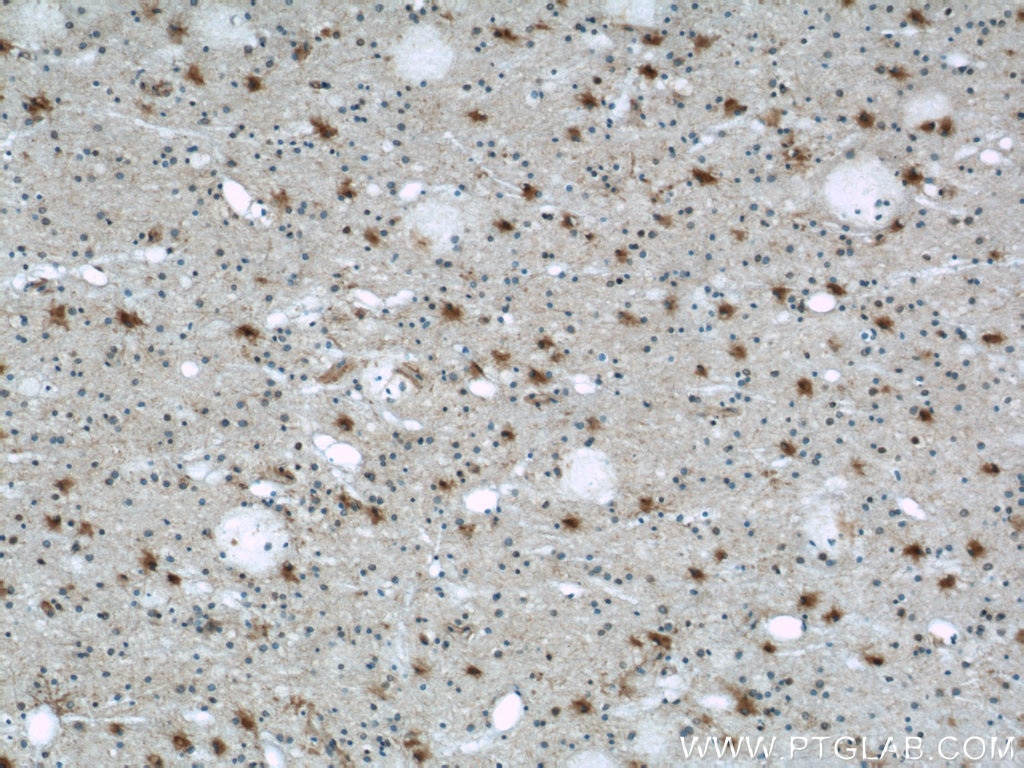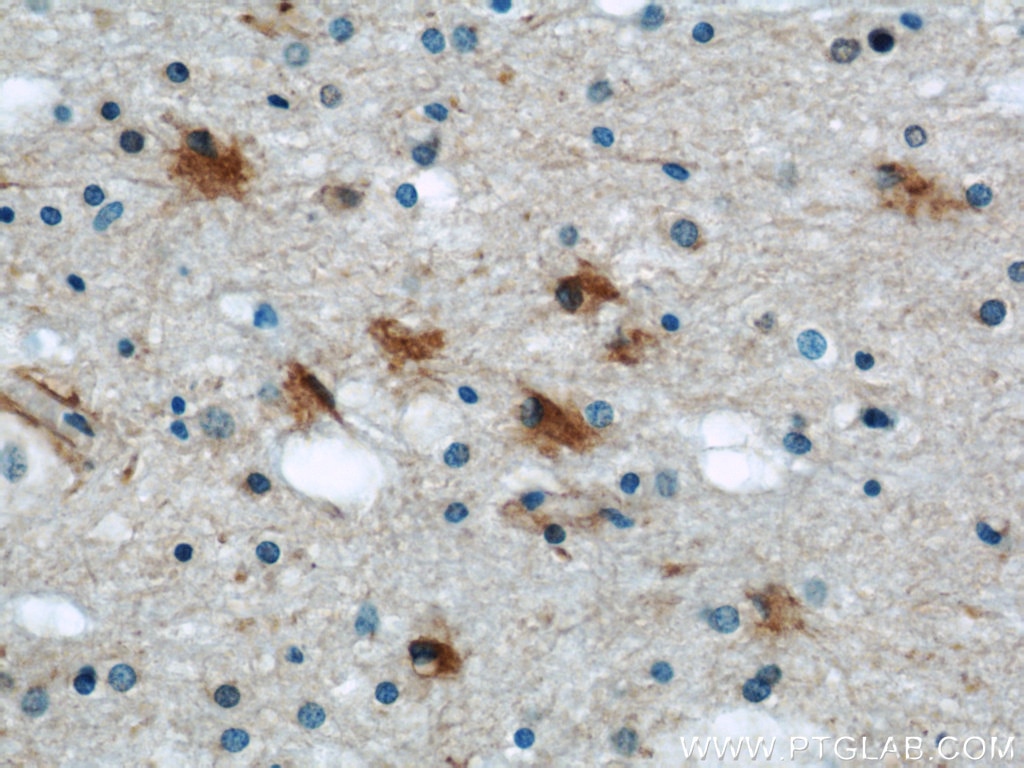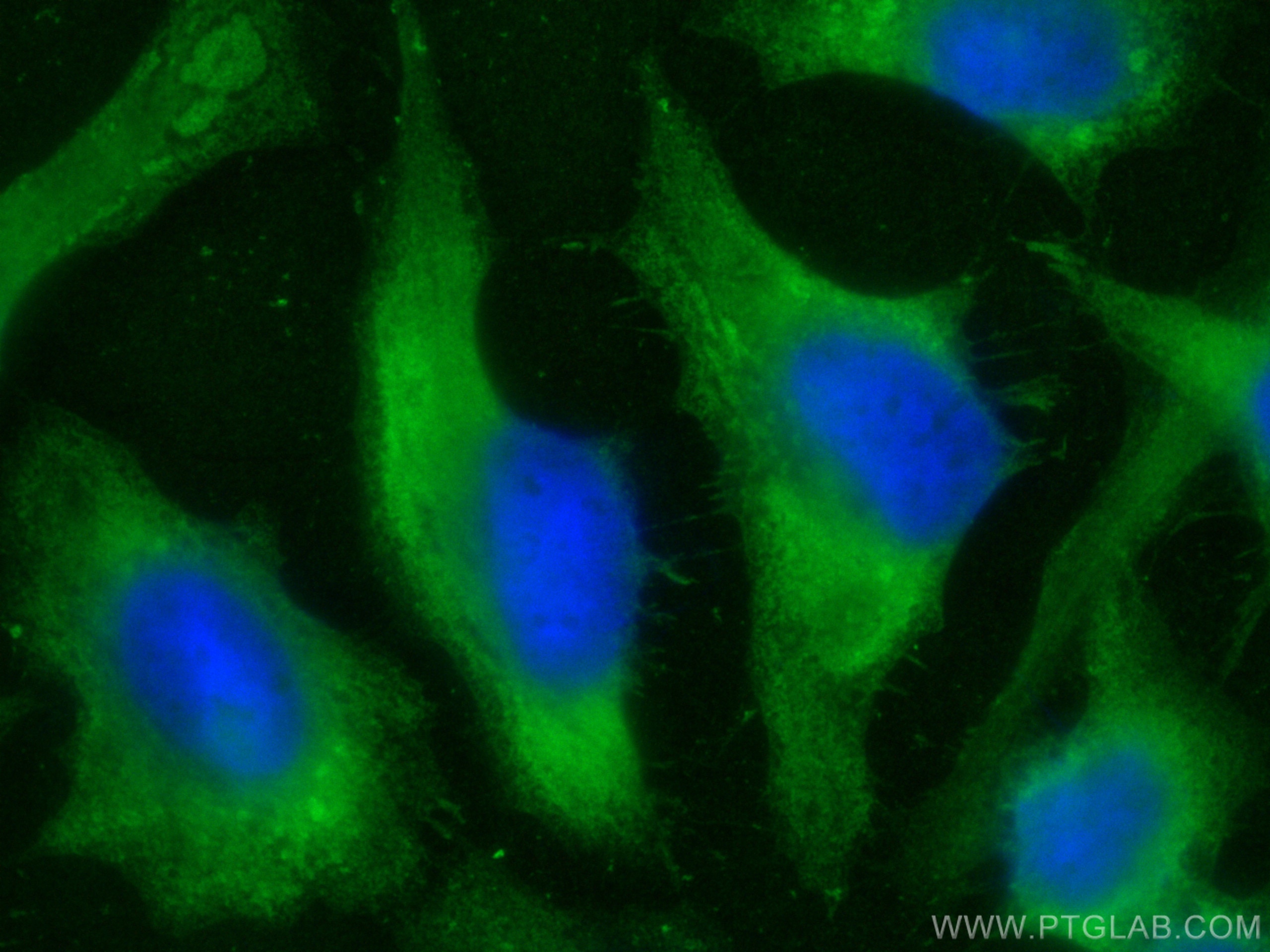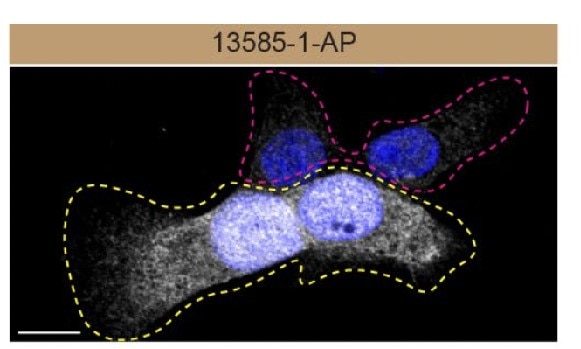- Featured Product
- KD/KO Validated
PRDX6 Polyklonaler Antikörper
PRDX6 Polyklonal Antikörper für WB, IHC, IF/ICC, IP, ELISA
Wirt / Isotyp
Kaninchen / IgG
Getestete Reaktivität
human, Maus, Ratte
Anwendung
WB, IHC, IF/ICC, IP, ELISA
Konjugation
Unkonjugiert
Kat-Nr. : 13585-1-AP
Synonyme
Geprüfte Anwendungen
| Erfolgreiche Detektion in WB | SH-SY5Y-Zellen, A549-Zellen, HeLa-Zellen, HepG2-Zellen, K-562-Zellen, Mauslebergewebe, Rattenlebergewebe |
| Erfolgreiche IP | HeLa-Zellen, HAP1 cells |
| Erfolgreiche Detektion in IHC | humanes Lebergewebe, humanes Hirngewebe Hinweis: Antigendemaskierung mit TE-Puffer pH 9,0 empfohlen. (*) Wahlweise kann die Antigendemaskierung auch mit Citratpuffer pH 6,0 erfolgen. |
| Erfolgreiche Detektion in IF/ICC | HeLa-Zellen |
Empfohlene Verdünnung
| Anwendung | Verdünnung |
|---|---|
| Western Blot (WB) | WB : 1:2000-1:12000 |
| Immunpräzipitation (IP) | IP : 0.5-4.0 ug for 1.0-3.0 mg of total protein lysate |
| Immunhistochemie (IHC) | IHC : 1:100-1:1000 |
| Immunfluoreszenz (IF)/ICC | IF/ICC : 1:200-1:800 |
| It is recommended that this reagent should be titrated in each testing system to obtain optimal results. | |
| Sample-dependent, check data in validation data gallery | |
Veröffentlichte Anwendungen
| KD/KO | See 6 publications below |
| WB | See 34 publications below |
| IHC | See 8 publications below |
| IF | See 5 publications below |
Produktinformation
13585-1-AP bindet in WB, IHC, IF/ICC, IP, ELISA PRDX6 und zeigt Reaktivität mit human, Maus, Ratten
| Getestete Reaktivität | human, Maus, Ratte |
| In Publikationen genannte Reaktivität | human, Maus, Ratte |
| Wirt / Isotyp | Kaninchen / IgG |
| Klonalität | Polyklonal |
| Typ | Antikörper |
| Immunogen | PRDX6 fusion protein Ag4512 |
| Vollständiger Name | peroxiredoxin 6 |
| Berechnetes Molekulargewicht | 224 aa, 25 kDa |
| Beobachtetes Molekulargewicht | 25-30 kDa |
| GenBank-Zugangsnummer | BC035857 |
| Gene symbol | PRDX6 |
| Gene ID (NCBI) | 9588 |
| Konjugation | Unkonjugiert |
| Form | Liquid |
| Reinigungsmethode | Antigen-Affinitätsreinigung |
| Lagerungspuffer | PBS with 0.02% sodium azide and 50% glycerol |
| Lagerungsbedingungen | Bei -20°C lagern. Nach dem Versand ein Jahr lang stabil Aliquotieren ist bei -20oC Lagerung nicht notwendig. 20ul Größen enthalten 0,1% BSA. |
Hintergrundinformationen
PRDX6 (Peroxiredoxin-6), also named as AOP2 or KIAA0106, is a unique member of the peroxiredoxin family of antioxidants. PRDX6 is highly expressed in liver and protects cells from oxidative damage by reducing H2O2 and various lipid Peroxides (PMID: 17382207). It can form a dimer(PMID:20500660).PRDX6 is expressed in all major organs, with a particularly high level in lung (PMID:15890616). Prdx6 is detected at approximately 24 to 28 kDa, and can be monosumoylated with the molecular mass of about 40 kDa (PMID: 24910119).
Protokolle
| PRODUKTSPEZIFISCHE PROTOKOLLE | |
|---|---|
| WB protocol for PRDX6 antibody 13585-1-AP | Protokoll herunterladen |
| IHC protocol for PRDX6 antibody 13585-1-AP | Protokoll herunterladenl |
| IF protocol for PRDX6 antibody 13585-1-AP | Protokoll herunterladen |
| IP protocol for PRDX6 antibody 13585-1-AP | Protokoll herunterladen |
| STANDARD-PROTOKOLLE | |
|---|---|
| Klicken Sie hier, um unsere Standardprotokolle anzuzeigen |
Publikationen
| Species | Application | Title |
|---|---|---|
Nat Commun Inhibited peroxidase activity of peroxiredoxin 1 by palmitic acid exacerbates nonalcoholic steatohepatitis in male mice | ||
Nat Commun Suppression of mitochondrial ROS by prohibitin drives glioblastoma progression and therapeutic resistance. | ||
Nat Commun Functional screening implicates miR-371-3p and peroxiredoxin 6 in reversible tolerance to cancer drugs.
| ||
Br J Pharmacol Luteolin ameliorates rat myocardial ischemia-reperfusion injury through peroxiredoxin II activation. | ||
Biomed Pharmacother Glycyrrhetinic acid inhibits non-small cell lung cancer via promotion of Prdx6- and caspase-3-mediated mitochondrial apoptosis | ||
Antioxid Redox Signal Peroxiredoxin 6 is a crucial factor in the initial step of mitochondrial clearance and is upstream of the PINK1-Parkin pathway. |
